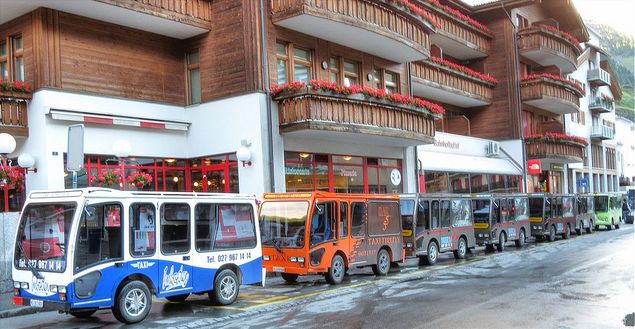Zermatt is famous for being a car-free resort, something that has been the case since the 1970s.
The Matterhorn Chalets team answer all the questions you need to know – including how many electric taxis in Zermatt, how often they get charged and why they are all exactly the same size and shape…
- About 500 electric buses and taxis are registered in Zermatt.
- The regular shape of the electric cars in Zermatt is no accident – the body shape and mass of 1.4m by 4m is restricted in law by the local authorities.
- Each electric taxi weights 2000kg and has a typical lifespan of 30 to 40 years.
- A typical Zermatt electric car costs CHF 65,000 to CHF 90,000
- Pedestrians have right of way in Zermatt, under Section 3 of the local traffic regulations.
- Hotelier Dr. Alexander Seiler II was the first to drive a 4-wheel motorised vehicle to Zermatt – probably in 1910 – but the internal combustion engine never caught on here.
- The first electric bus was used in Zermatt in 1947, using a tow-bar to pull a passenger section behind.
- Until 1970s, locals and guests got around on foot or by one of 44 horse-drawn carriages.
- Only two horse-drawn carriages exist today – operated by the Zermatterhof and Mont Cervin Palace hotels.
- Most of the electric vehicles in Zermatt were built by Stefan and Bruno Imboden in their workshop on Bodmenstrasse, near the station.
- Depending on the age of the battery, payload, season and the gradient, the vehicles have to be recharged either daily or every other day at a cost of CHF 3 to CHF 5 per charge.
- The life span of the battery varies from four to twelve years.
- The local police are permitted to drive faster than taxis as long as ‘due caution is exercised’.

Now you know whey they’re all the same size…